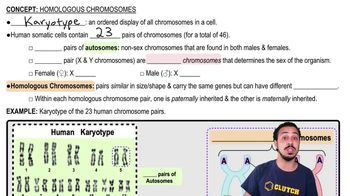Where in an angiosperm would you find a megasporangium?
a. In the style of a flower
b. Enclosed in the stigma of a flower
c. Within an ovule contained within an ovary of a flower
d. Packed into pollen sacs within the anthers found on a stamen
 Verified step by step guidance
Verified step by step guidance



Where in an angiosperm would you find a megasporangium?
a. In the style of a flower
b. Enclosed in the stigma of a flower
c. Within an ovule contained within an ovary of a flower
d. Packed into pollen sacs within the anthers found on a stamen
Key features of seed plants facilitating life on land include three of the following four traits. Select the exception.
a. Homospory
b. Pollen
c. Reduced gametophytes
d. Seeds
Which of the following is not a characteristic that distinguishes gymnosperms and angiosperms from other plants?
a. Dependent gametophytes
b. Ovules
c. Pollen
d. Alternation of generations
Gymnosperms and angiosperms have the following in common except
a. Seeds
b. Pollen
c. Ovaries
d. Ovules
Use the letters a–d to label where on the phylogenetic tree each of the following derived characters appears.
a. Flowers
b. Embryos
c. Seeds
d. Vascular tissue